 Technology
Technology  Technology
Technology  Humans
Humans 10 Everyday Human Behaviors That Are Actually Survival Instincts
 Animals
Animals 10 Animals That Humiliated and Harmed Historical Leaders
 History
History 10 Most Influential Protests in Modern History
 Creepy
Creepy 10 More Representations of Death from Myth, Legend, and Folktale
 Technology
Technology 10 Scientific Breakthroughs of 2025 That’ll Change Everything
 Our World
Our World 10 Ways Icelandic Culture Makes Other Countries Look Boring
 Misconceptions
Misconceptions 10 Common Misconceptions About the Victorian Era
 Mysteries
Mysteries 10 Strange Unexplained Mysteries of 2025
 Miscellaneous
Miscellaneous 10 of History’s Most Bell-Ringing Finishing Moves
 Technology
Technology Top 10 Everyday Tech Buzzwords That Hide a Darker Past
 Humans
Humans 10 Everyday Human Behaviors That Are Actually Survival Instincts
 Animals
Animals 10 Animals That Humiliated and Harmed Historical Leaders
Who's Behind Listverse?

Jamie Frater
Head Editor
Jamie founded Listverse due to an insatiable desire to share fascinating, obscure, and bizarre facts. He has been a guest speaker on numerous national radio and television stations and is a five time published author.
More About Us History
History 10 Most Influential Protests in Modern History
 Creepy
Creepy 10 More Representations of Death from Myth, Legend, and Folktale
 Technology
Technology 10 Scientific Breakthroughs of 2025 That’ll Change Everything
 Our World
Our World 10 Ways Icelandic Culture Makes Other Countries Look Boring
 Misconceptions
Misconceptions 10 Common Misconceptions About the Victorian Era
 Mysteries
Mysteries 10 Strange Unexplained Mysteries of 2025
 Miscellaneous
Miscellaneous 10 of History’s Most Bell-Ringing Finishing Moves
10 Ridiculously Common Things Our Ancestors Used To Revere
We live in an age of plenty. The stuff our ancestors might only see once in their lifetimes we can now order direct to our homes. Nowhere is this shift more apparent than when looking at things that past generations used to revere. For them, the following objects and materials were so unusual that they were a source of pride. For us, they’re so incredibly common that it’s crazy to think anyone ever thought twice about them.
10 Pretzels
Most people would probably agree that pretzels are delicious. But how many would consider them the stuff of kings? For an answer to that question, look no further than Sweden in the early 17th century. Around the year 1614, pretzels were considered so prestigious that royal couples used them in their wedding ceremonies.
Just stop and think for a second about how crazy this is. You’ve got two blue-blooded people marrying, with all the combined wealth of their rich families, and they choose to tie the knot with a pretzel. Yet the popular snack food had a whole heap of connotations attached to it back then that made it seem like a reasonable choice.
As the creation of monks, who handed them out to their students, pretzels in 17th-century Europe were regarded as signs of holiness. Sort of how Catholics today drink wine not because they’re all oenophiles but because they consider it to be Christ’s blood.
On top of that, it had been pretzel makers who accidentally uncovered an Ottoman plot to sack Vienna only 100 years earlier by overhearing them digging a tunnel past their bakery walls. Perhaps the real surprise then isn’t that pretzels were once revered but that they aren’t anymore.
9 Black Pepper

Wherever you are, stop reading right now and go to the nearest kitchen or diner. See that little shaker of black pepper sitting on the side? You probably barely even notice it under most circumstances. But if you’d lived in medieval Europe, that tiny little shaker would have made you blow your lid. Back then, black pepper was one of the most valuable products in the entire world.
There’s no real equivalent today by which to measure how fabulously expensive ordinary pepper once was. Try to imagine finding a solid gold box filled with expensive truffles, and you might have some idea how your medieval forebears would have felt finding a pepper shaker.
Brought into Europe along the Silk Road from Kerala in south India, the spice was so prized that traders in Venice and Genoa could essentially charge whatever the heck they wanted. Even today, the Dutch have a phrase that translates as “pepper expensive” for insanely overpriced items.
Pepper was so valuable back in the day that one of the reasons Christopher Columbus did all his traveling was to circumvent Venetian pepper prices. In the West Indies, he even stocked his hold full of stuff that he thought was pepper, only to eventually discover that he’d made a mistake and his entire stock was worthless.
8 Aluminum

If someone were to run a contest to name Earth’s dullest element, aluminum would win hands down. Although useful, it’s also superabundant, boring to look at, and used in everything from cars to cans. In short, it’s no gold, silver, or even bronze. Yet things weren’t always this way. In the mid-19th century, aluminum was so valuable that the US government wanted to cover the nation’s greatest monuments in it.
In 1884, the price of 28 grams (1 oz) of aluminum was around $1. Not so much, you might think. Until, that is, you compared it to the price of labor. For an average worker to afford a single ounce of aluminum, they’d need to work for a minimum of 10 hours straight. For comparison, 28 grams (1 oz) of silver currently costs around $17. Even on minimum wage in 2016, you can make that much in slightly over 2 hours.
As a result, aluminum became a kind of status symbol. The federal government even commissioned the top of the Washington Monument to be made of aluminum as a way of projecting America’s wealth and power to the world. At one point, the suggestion was even made to add aluminum to plenty of Capitol Hill’s other monuments. Thankfully, this never went ahead or Washington would be looking pretty tacky right about now.
7 Books

In an age when all of us can download dozens of ebooks with a few swipes of our finger, it can feel like the written word is nearly valueless. So it’s sort of mind-blowing to consider just how valuable books were once considered to be. No other tale demonstrates this better than Ptolemy III’s third-century BC book deal with Athens.
As the guy in charge of Egypt, Ptolemy III’s biggest status symbol was the Library of Alexandria. A huge hub for learning, it kept many of the ancient world’s greatest texts. The city even had a principle of searching any ship that docked for books. If one was found, it would be confiscated for the library and the owner given monetary compensation.
So when Ptolemy III asked Athens if he could borrow their rare copies of Sophocles, Euripides, and Aeschylus, the Athenians made sure to get insurance. As a deposit, they demanded an incredible 15 talents of silver.
Today, that would be like Greece demanding that Egypt give them many millions or even billions of dollars in exchange for a handful of books. It was intended to ensure that Ptolemy III couldn’t afford not to hand the papyri back.
Instead, Ptolemy III chose the books over the 15 talents of silver, blowing a large hole in his state’s budget. The most amazing part of all? Ptolemy III didn’t even keep the contents for himself. He sent the Athenians copies for their own records. Simply having the originals was apparently worth semi-bankrupting himself.
6 Nutmeg
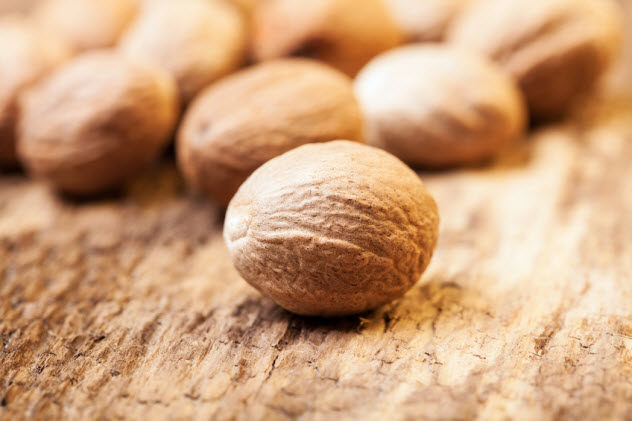
An aromatic spice with mild hallucinogenic effects, nutmeg today can be picked up at Walmart for around $3 for 56 grams (2 oz). Reading that sentence would have probably given your ancestors a heart attack (after you’d taken time out to explain what the devil “Walmart” was to them).
For medieval people, nutmeg wasn’t just a valuable spice. It was perhaps the most valuable commodity in the world. At one point in the 1300s, it was worth even more than gold.
It’s hard to overstate today just how collectively crazy the world went during the years of the spice trade. At several points, Spain and Portugal literally killed thousands of each other’s citizens over cloves. But none of that madness can even hold a candle to nutmeg.
In the 1600s, the nutmeg-rich island of Run in Indonesia became the most valuable piece of real estate on Earth. The British and Dutch wound up going to war over this 3 kilometer (2 mi) scrap of land. The only reason they didn’t wind up wiping each other out is because the Dutch agreed to swap Manhattan for it.
That’s right, the Dutch handed over Manhattan for a tiny island that you’ve never even heard of just to get their hands on some nutmeg. If you ever get hold of a time machine and can only grab one household item before being blasted into the past, make sure it’s your spice rack.
5 Beds

Shakespeare wrote a ton of comedies in his time, but perhaps the funniest thing he ever put to paper was his last will and testament. It contains one of the best posthumous put-downs of all time, with the Bard writing: “I give unto my wife my second-best bed.” The thought of poor Mrs. Shakespeare’s face as she heard those words is undoubtedly hilarious. It doesn’t matter how swanky the bed in question was, that’s still some serious burn!
We only see things this way because we’re used to thinking of beds as common items. In the early 17th century, things were very different. Shakespeare scholars have unearthed several last wills written around the time that contain affectionate references to passing on “second-best” beds. Unlikely as it seems to us, furniture was so valuable in those days that even second-rate beds were considered luxurious status symbols.
A modern equivalent might be hearing that you’ve been left your spouse’s “second-best car.” Sure, you’d rather have the first best, but if the car in question is still a Lamborghini Veneno, you’re not exactly gonna be complaining.
4 Broken Cups And Plates
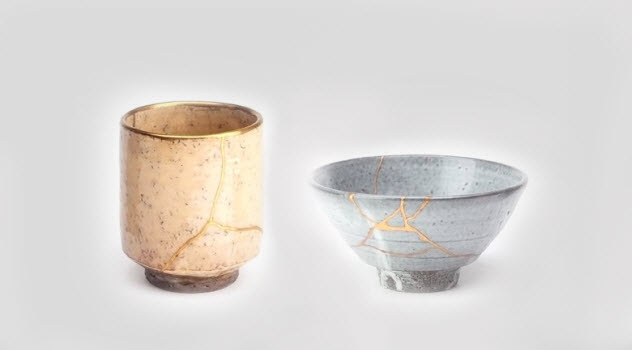
Here’s a weird question for you. When is an object worth more broken than whole? The answer is: when you’re living in Japan a couple of centuries back. Around the 15th century, a shogun tasked some craftsmen with coming up with an aesthetically pleasing way of fixing broken pottery. The technique they devised was so awesome that broken objects treated this way wound up becoming more valuable than the objects themselves.
Known as kintsugi, the basic premise of this ancient art is that you draw attention to cracks by applying a gold-colored resin to them. Philosophically, this fits in with ideas of wabi-sabi (the cultural idea of finding beauty in imperfections).
It’s still practiced today, albeit using different techniques that aren’t considered so valuable. But back in the pre-Tokugawa and Edo periods, kintsugi was considered such a delicate craft that big money would change hands for broken pottery treated by experts.
3 Table Salt
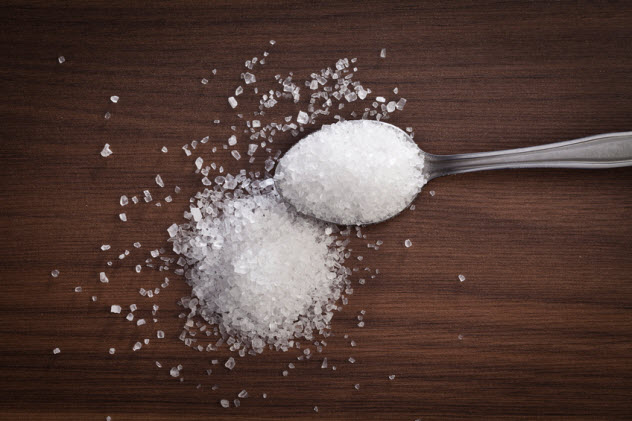
Salt is necessary for human survival. Our bodies need it. Try going without salt, and you’ll eventually wind up in a pretty bad place. So it makes sense that our distant ancestors would have revered it. But this entry isn’t about our distant ancestors. Much closer to our own time, people were still going crazy over salt. In fact, it was one of the main flash points during the US Civil War.
It’s hard to overstate just how important ordinary salt was for both the Confederacy and the Union. Salt was used to preserve troop rations, tan leather, and dye clothes. It was a huge part of the war effort on both sides. It was also a primary target.
From the get-go, Union troops went out of their way to attack the South’s precious few inland salt production facilities. That’s how important salt was. Beyond basic infrastructure, beyond water resources, beyond cities themselves, taking down salt production was thought to be crucial to winning the war.
The Confederacy was no less aware of its importance. Jefferson Davis granted a waiver on military service to anyone who would head out to the coast and work in salt production, making it one of the few effective ways in the South to dodge the draft.
2 Tomatoes
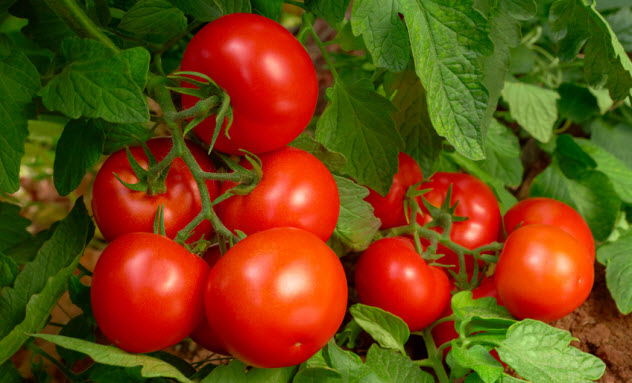
Nearly every cuisine in the world features tomatoes. Just think about how often you are likely to eat them. Every time you order a pizza, whip up some pasta, or dollop ketchup on a wiener, there’s tomato. For such a ubiquitous fruit, its arrival in Western cuisine is surprisingly recent.
Cultivated by the Maya, the tomato only arrived in Europe in the 16th century. Although Italians and the Spanish immediately took to them, northern Europe was more wary. Tomatoes are part of the nightshade family, a group of plants that features some super-deadly members.
As a result, tomatoes didn’t really take off until the middle of the 18th century. This made them a pretty rare sight in northern Europe and the American colonies. Which may explain why our ancestors considered the tomato a plant of almost singular beauty.
In the early days of the American colonies, tomatoes were seen the way we might see a rare orchid today. They were rare, valuable, and thought to be worth growing for their aesthetic value alone. People marveled over them. Americans in the 18th century even wrote poems about them in much the same way that we might write poems about, say, roses. If the idea of a bunch of Pilgrims staring wistfully at a tomato and thinking deep thoughts about beauty seems strange to you, you’re not alone.
1 Bird Poop
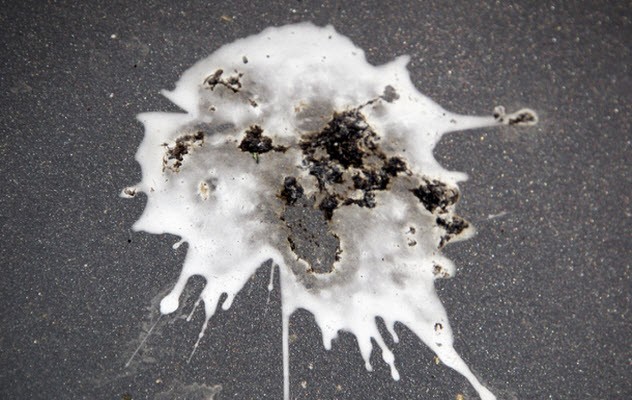
We’re not exaggerating when we say that people used to kill each other over lumps of bird poop. If anything, that’s an understatement. Not so long ago, countries used to go to war, fund cross-ocean expeditions, and become global players all because of stuff that came out of a bird’s backside. It was the second half of the 19th century, and the Western world ran on guano.
Used as fertilizer by the Peruvians since time immemorial, guano had been largely ignored by the colonialists in favor of stripping the continent of precious metals. Then one day in the early 19th century, a Prussian guy named Alexander von Humboldt got curious and sent a sample to some chemists back home. They realized just how powerful a fertilizer they were dealing with. Europe promptly went bananas for the stuff. The “Age of Guano” was born.
At its height, guano dominated politics in the 19th century unlike any substance since. President Millard Fillmore dedicated his first State of the Union address to promising to bring guano prices down. (At the time, it was trading for nearly $5 for 28 grams (1 oz)—significantly more than aluminum would be worth at its height decades later).
In 1856, Congress passed a law allowing American citizens to claim guano-rich islands for the US, no matter where in the world they were. The eight US Minor Outlying Islands that are still administered by Washington are a direct result of guano claims, as are parts of Samoa and Hawaii. Without the act, creation of the Pacific Remote Islands National Marine Monument in 2014 would have been impossible.
Other countries got in on the act, too. Some of Britain’s African imperial ventures were specifically for the acquisition of guano (such as off the coast of Namibia). Peru and Bolivia even went to war against Chile over it, resulting in some 15,000 deaths. Spain bombarded its colonies over the stuff. Across the globe, guano became known as “white gold.”
Eventually, the guano boom ended in a guano bust. Chemical fertilizers eliminated the need for a natural fertilizer, and guano fell out of favor. Today, the idea that wars were fought and people died over something as simple as bird droppings seems categorically insane, but that’s history for you. No doubt our descendants will look one day at all the crazy stuff that we’re fighting over and revering in the present, shake their heads, and ask themselves, “What the heck were they thinking?”








